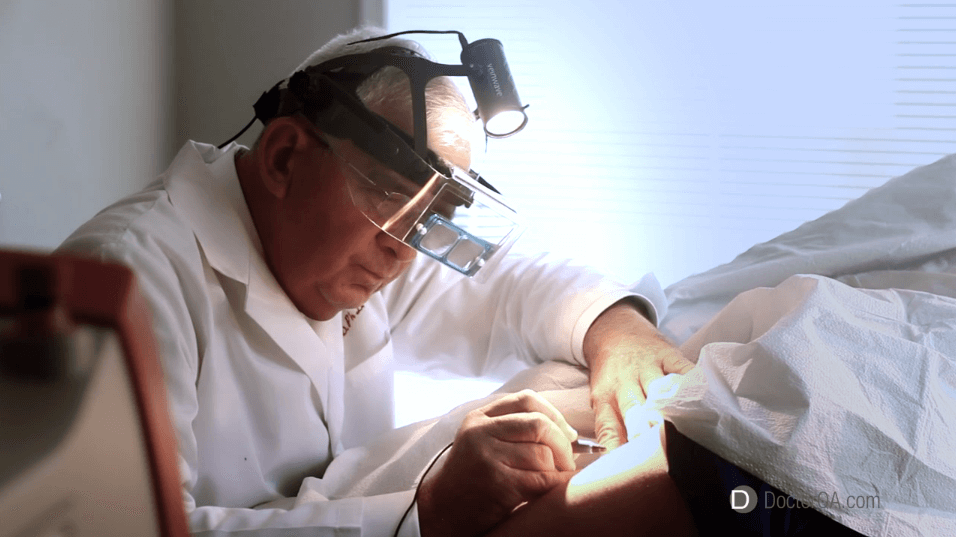Varithena Foam Treatment
Why Choose Us
We are dedicated to advancing the standard of care for treating venous diseases.

Our practice is committed to broadening public understanding of vein health and furthering its research. By employing a comprehensive approach to patient care, we help individuals manage the symptoms and complications of venous diseases.
How Varithena® Works: A Case Study
Materials and Methods
The greater saphenous vein is accessed by inserting a 5 French micropuncture catheter in the distal thigh. To drain the blood in the varicose veins, the leg is elevated 45 degrees. The greater saphenous vein (GSV) is thrombosed with polidocanol injectable foam 1% using ultrasound guidance. During this process, the saphenofemoral junction is compressed to protect the deep system.
Afterward, another injection is administered to the patient through the same catheter. This allows the polidocanol foam to flow distally through the incompetent varicose veins to the calf in a retrograde manner. The patient is then asked to dorsiflex his foot to close patent perforators.
Results
A 38-year-old male has been living with varicose veins for many years and experiencing a heavy feeling in both legs. Severe reflux in the greater saphenous vein, 500 ms. in duration, was noted. In addition, the right greater saphenous vein measured 11 mm. in diameter, with 8–11 mm. varicosities at the knee.
The greater saphenous vein was thrombosed with 3 mL. of polidocanol injectable foam 1%. Afterward, the remaining varicosities in the distal leg were treated using another 5 mL. of polidocanol injectable foam 1%, which was administered through the same micropuncture catheter in the distal thigh. The total foam volume that was utilized in the procedure was 8 mL.


Conclusion
The study describes an improved technique for treating GSV and associated varicose veins in the distal leg simultaneously through only one access site.
Other Treatment Options
Ligation of incompetent perforators, subfacial endoscopic perforator vein surgery (SEPS), and ultrasound-guided sclerotherapy of perforating veins have been employed to decrease ambulatory venous hypertension and promote healing of chronic venous insufficiency ulcers. These methods are also helpful in treating various vein health problems, such as:
- Varicose Veins
- Spider Veins
- Venous Ulcers/Leg Wounds
- Other Venous Disease

Audible Bleeding Podcast

Retrograde administration of polidocanol endovenous microfoam (Varithena)
